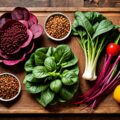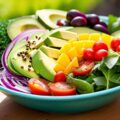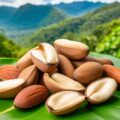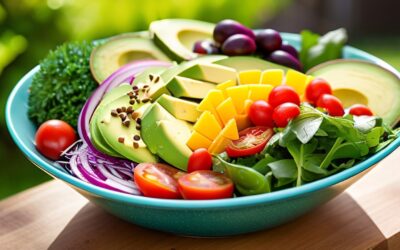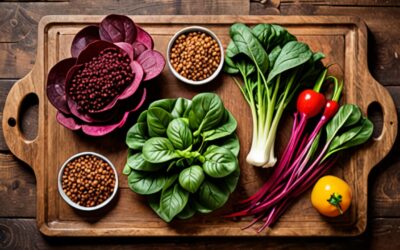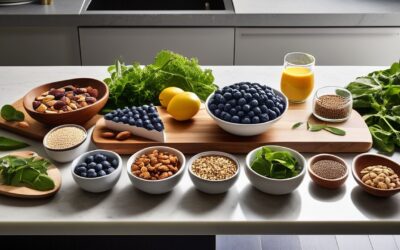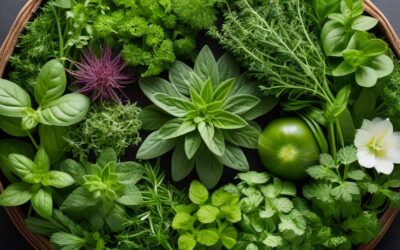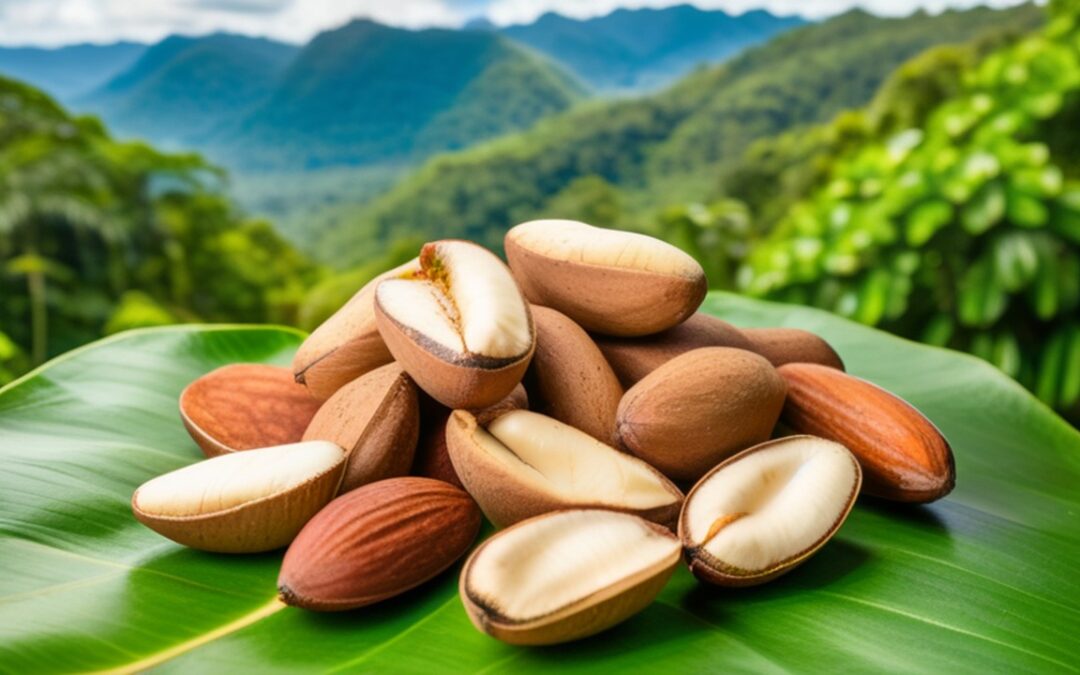Imagine being able to chase after grandkids or carry groceries without breaking a sweat—regular exercise makes this dream a reality for many older adults, fostering independence and enhancing quality of life.
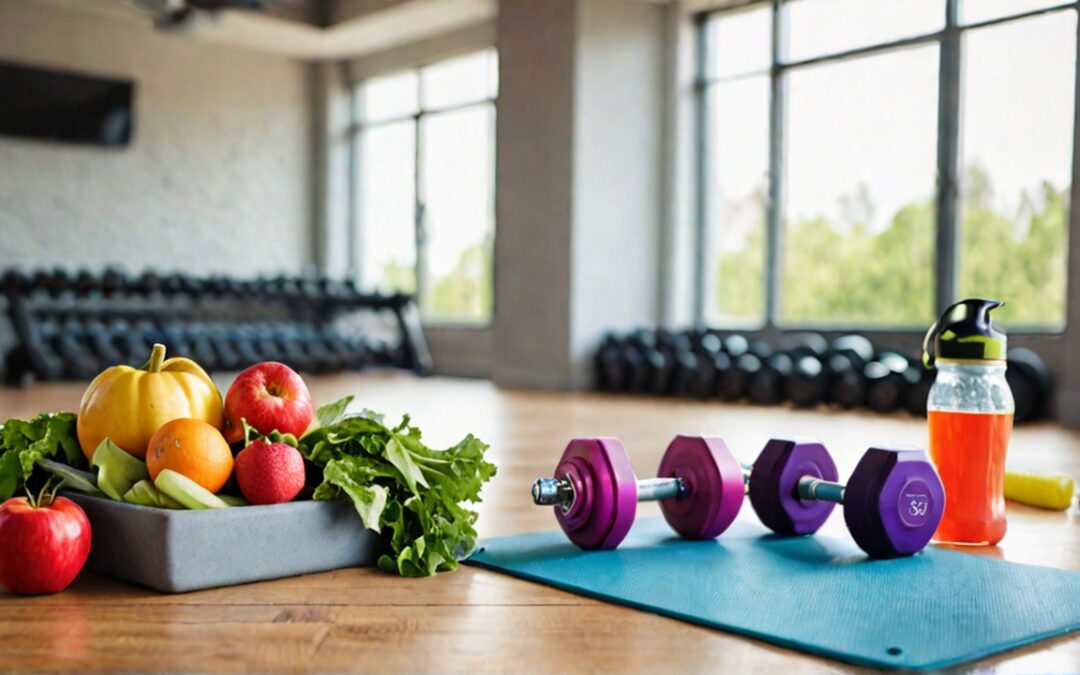
The Secret to a Vibrant Old Age? Strengthening Your Muscles!
The Secret to a Vibrant Old Age? Strengthening Your Muscles!
Imagine being able to chase after grandkids or carry groceries without breaking a sweat—regular exercise makes this dream a reality for many older adults, fostering independence and enhancing quality of life. Before embarking on any fresh fitness adventures aimed at strengthening aging muscles, it’s wise to get the green light from healthcare experts.
Moving more helps aging folks toughen up bones and muscle, which means saying yes to freedom and joy even later in life. In this article, you’ll find a list of senior-friendly exercises coupled with ways to overcome any roadblocks towards being physically active because taking care of our bodies is key to maintaining our mental health too.
The Science Behind Exercise and Aging
Understanding Sarcopenia and Its Impacts
Aging brings along an unwelcome guest named sarcopenia which saps your muscular strength over time. Before you know it—poof! Climbing stairs feels harder than before while fatigue creeps in just when trying to stand after sitting awhile. Growing older? To stay spry and in high spirits, pampering those muscles isn’t optional – it’s downright crucial.
The Role of Exercise in Slowing the Aging Process
For anyone trying to keep the years at bay, hitting the gym or taking that daily jog can do more than most pills. Physical activity boosts both mental clarity and muscle power like nothing else.Engaging in activities like running for 30-40 minutes five days a week can offer a “biological aging advantage” of nearly nine years 2. Additionally, moderate to intense exercise can decelerate brain aging by up to a decade 2.
Cardiovascular and Cholesterol Benefits
Intense exercise is fundamental for cardiovascular well-being, assisting with keeping the heart muscle adaptable and arteries supply. Exercise also positively alters cholesterol levels by boosting HDL (“good” cholesterol) and reducing LDL (“bad” cholesterol) and triglycerides.
Musculoskeletal and Balance Advantages
Keeping your heart in shape and ensuring your arteries are up to the task comes down to a solid endurance training routine. Exercise also positively alters cholesterol levels by boosting HDL (“good” cholesterol) and reducing LDL (“bad” cholesterol) and triglycerides.
Exercise as a Preventive Measure Against Chronic Diseases
Regular physical activity is key in warding off diseases such as heart disease, stroke, diabetes, and even Alzheimer’s. Not stopping there, it acts as a shield against particular cancers and sprinkles extra years onto our lifelines.
Exercise and Mental Health
Beyond physical benefits, exercise contributes significantly to mental well-being by mitigating symptoms of depression and anxiety and enhancing focus and cognitive function 6.
Cellular Health and Longevity
Exercise influences cellular health by reducing the number of senescent cells, which are associated with various age-related diseases 7. It also increases the expression of genes linked to youthfulness and vitality 8.
When it comes down to aging gracefully, regular workouts do more than keep you trim—they’re your ticket to a vibrant later life and expanding your time feeling good.
Physical Benefits of Exercise for Seniors
Strength and Mobility Enhancements
1. Strength Training Impact: Engaging in strength training is pivotal for maintaining muscle mass and mobility, significantly enhancing the quality of life in later years.
2. Resistance Benefits: Imagine this—lifting weights regularly does wonders in slowing down muscle wear and tear due to aging. Essential doesn’t even begin to cover its role in elderly healthcare!
3. Comprehensive Strength Increases: Studies show that 12 to 24 weeks of resistance training can boost muscle strength by at least 25% among those over 50 13.
Balance and Functional Benefits
1. Improved Balance and Mobility: Resistance training is linked to better balance and mobility, crucial for fall prevention in seniors 13.
2. Enhanced Daily Functioning: When we beef up our muscle strength, every chore becomes easier, improving how smoothly our bodies operate day to day.
Health and Disease Prevention
1. Cardiovascular and Chronic Disease: Regular exercise enhances cardiovascular health and reduces the risk of chronic illnesses like diabetes and cancer.
2. Bone Health: To combat the natural decline in muscle strength and bone density among older adults, engaging in activities like walking or lifting weights does wonders.
3. Immunity and Disease Management: Lacing up those sneakers does wonders beyond fitness – it strengthens your body’s fight against illnesses including the big guns, diabetes and heart disease.
Exercise Recommendations
1. CDC Guidelines : Older adults should engage in at least 150 minutes of moderate-intensity or 75 minutes of vigorous-intensity aerobic activities weekly, along with muscle-strengthening activities 17.
2. Balance and Flexibility: Incorporating balance activities and flexibility exercises is recommended to prevent falls and improve mobility.
3. Variety in Activities: Engaging in multicomponent activities like Tai Chi, yoga, or gardening provides comprehensive benefits, combining aerobic, strength, and balance training.
Cognitive and Emotional Health
1. Cognitive Benefits: Regular physical activity is associated with slowed cognitive decline from conditions like Alzheimer’s.
2. Emotional Well-being: Get moving to clear your head! Regular exercise chases away sadness and fights off depressive moods like a hero.
With consistent practice of tailored workouts comes a wave of advantages – maintaining solo ventures becomes smoother; breathing more joy and substance into every moment after retirement seems like a given.
How Caring for Your Emotional Well-being Pays Off
For seniors, regular workouts do more than keep the body in shape; they’re a secret weapon against feeling down or out of touch. Picture it as hitting a refresh button on your mood and mental clarity. Here’s a detailed look at how staying active can uplift the mental state and emotional well-being of seniors:
1. Alleviation of Depression and Anxiety: Lacing up for a walk or flowing through Tai Chi movements can really lift your spirits, easing those heavy feelings of depression and anxiety into a light sense of happiness.
2. Enhancement of Mood and Cognitive Function: A regular workout routine brightens up our day-to-day moods and dials down anxiety while fortifying our minds against age-related diseases like dementia—true food for thought.
3. Social Benefits: Joining an exercise group can lift your spirits as much as it lifts your heart rate, pushing away solitude by surrounding you with like-minded individuals. Working out in a class setting does more than get your heart rate up – it connects you with others chasing similar goals.
4. Improved Sleep and Overall Health: Ever notice how after hitting the gym or taking that evening walk, bedtime feels blissful? That’s because active days lead to restful nights – setting off a chain reaction of feeling stronger both physically and mentally.
5. Endorphin Release: Exercise stimulates the production of endorphins, the body’s natural mood lifters, which can create feelings of happiness and euphoria.
6. Cognitive and Emotional Resilience: As we get older, hitting the gym or taking that morning walk can be our best defense in maintaining mental sharpness and emotional calm amidst life’s ups and downs.
7. Creative and Cultural Engagement: When you throw yourself into dance or any artistic endeavor, it does more than entertain. Grasping onto something that defines you, as it intertwines deeply with the heartfelt connections of your heritage.
Moving your body regularly is like hitting a triple jackpot for seniors – better health, clearer thinking, and happier moods all wrapped up in one!
Types of Exercise Suitable for Older Adults
Flexibility and Balance Exercises
Flexibility exercises such as yoga and tai chi not only enhance balance and coordination but also significantly reduce the risk of falls and injuries among older adults. Engaging in certain exercises helps our elders maintain their independence by dodging those all-too-common slips and trips.
Aerobic and Endurance Activities
Moderate-intensity aerobic activities, including brisk walking, cycling, and swimming, are recommended to maintain cardiovascular health and overall stamina. The CDC advises that older adults should accumulate at least 150 minutes of moderate-intensity aerobic activity weekly, which can be conveniently broken into shorter sessions spread throughout the week.
Strength and Resistance Training
Engaging in muscle-strengthening activities is essential for preserving muscle mass and bone density. This includes lightweight training with dumbbells or resistance bands, ideally performed two to three times a week. These exercises should be done to the point of difficulty in performing another repetition without assistance for maximum benefit.
Low-Impact Exercises
For those particularly concerned about joint health, water aerobics and chair yoga offer excellent low-impact alternatives that lessen the stress on bones and joints while still providing significant health benefits. For folks facing arthritis or other conditions that make moving tough, these are the go-to activities.
Daily Physical Activities
Incorporating physical activities into daily routines can also be highly beneficial. Whether it’s going for a walk, digging in the garden, or tackling housework, all of it counts. Jumping into these activities not only keeps your body in motion but also doubles as an effortless workout, no special gear required.
Specialized Senior Fitness Programs
Several organizations offer tailored exercise programs for seniors, such as the short exercise videos from Planet Fitness, which focus on low-impact cardio, strength, mobility, balance, and stability 22. Designed specially for the elderly, every aspect of these programs is about keeping them safe while meeting their needs effectively. 22.
Comprehensive Exercise Recommendations
The National Institutes of Health emphasizes the importance of a balanced exercise regimen that includes activities targeting balance, endurance, flexibility, and strength 29. Similarly, the NHS and CDC recommend a combination of muscle-strengthening activities, balance improvement exercises, and moderate-intensity aerobic activities to ensure a holistic approach to senior fitness 152830.
Overcoming Barriers to Physical Activity
To encourage exercise among seniors who are hesitant, healthcare professionals can suggest a gradual increase in activity, starting from minimal to the recommended daily amounts. For those with chronic conditions, engaging in physical activities as much as their health permits can still offer significant benefits. Talking with healthcare experts is your best bet for workout advice that fits just right.
Start Small and Build Gradually
1. Begin with low-intensity exercises and gradually increase the intensity based on individual fitness and strength levels.
2. Avoid exercises that are too strenuous or involve heavy weights to prevent joint pain and potential damage.
3. For those experiencing discomfort or pain, which affects half of the older adult population, consulting with healthcare providers is crucial 21.
4. Initiating exercise routines slowly and cautiously can prevent overexertion and minimize injury risks.
Economic and Social Considerations
1. The cost of gym memberships and personal training can be prohibitive for seniors on a fixed income.
2. Senior centers and local organizations often offer affordable classes, or one could join a mall walking group.
3. Exercising with a partner has been shown to increase the success rate of maintaining regular physical activity.
4. Hanging out with family and friends not only boosts your spirits but joining group activities can also amp up the fun in socializing.
Practical Tips for Incorporating Exercise
1. Monitor daily activities for a week to identify potential time slots for exercise.
2. Mix up your day with some fun movement – consider biking or strolling to places close by.
3. Utilize home exercise opportunities or community resources for accessible exercise options.
4. Online resources and setting up a safe home exercise space can also help seniors maintain an active lifestyle.
Addressing Physical and Psychological Barriers
1. Chronic conditions and physical limitations like reduced muscle mass and joint stiffness can make exercise challenging; working with healthcare providers to develop a safe exercise plan is essential 27.
2. Fear of injury can deter activity; focusing on proper techniques and starting with simple movements can alleviate these fears.
3. Misconceptions about aging and exercise can hinder participation; educating seniors on the benefits of staying active at any age is crucial.
Breaking through those walls carefully while handing out useful tips paves the road for seniors seeking adventures in good health.
Building a workout plan that sticks isn’t just about sweat; it’s crafting habits you can hold onto for life.
For seniors to stay on top of their fitness game, weaving together fun, variety, and health perks in their workouts can make all the difference for sticking to it. Here’s a structured approach to creating a sustainable exercise routine for seniors:
Step 1: Assess and Plan
a. Consultation and Assessment: Before starting, seniors should consult a physician to understand their current fitness levels and any preexisting conditions that might affect their ability to exercise.
b. Personalized Exercise Schedule: Design an exercise program that includes aerobic, strength, flexibility, and balance exercises, tailored to individual needs and goals.
c. SMART Goals: Set Specific, Measurable, Achievable, Relevant, and Time-bound goals to keep track of progress and stay motivated.
Step 2: Implement the Routine
a. Begin with Low-Intensity Exercises: Start slowly with exercises that are manageable and gradually increase the intensity to prevent injuries.
b. Incorporate Variety: Add flavor to each day by alternating between taking long walks under open skies enjoying dips that cool you off completely when temperatures rise outside just right for plant care later during cooler evenings — variety is truly life’s own seasoning here!
c. Regular Schedule: Carve out specific times for workouts and weave physical activity into your daily routine like a pro.
Step 3: Social and Nutritional Support
a. Exercise with Peers: Encourage exercising with a friend or joining a group class to enhance motivation and enjoyment.
b. Nutritional Support : Focus on post-workout nutrition, including a meal or drink with a carbohydrate-to-protein ratio of about three-to-one or four-to-one within 30 minutes after exercising to aid muscle recovery and growth 14.
c. Hydration and Clothing: Maintain hydration by drinking water before, during, and after exercise, and wear appropriate fitness clothes and shoes for comfort and safety.
Step 4: Monitor and Adapt
a. Listen to Your Body: Pay attention to how your body responds to exercise. Adjust the intensity and type of activities based on personal comfort and health status.
b. Track Progress: Use the SMART framework to assess progress towards goals and make necessary adjustments to the exercise plan.
c. Recovery and Rest: Include adequate rest days to allow for muscle repair and recovery. Why not give gentle stretching, foam rolling, or a soothing massage a shot for better recovery?
Older folks who stick to an exercise schedule not only beef up their health but also cling onto their self-reliance and enjoy life more.
Conclusion
Older adults find that their health flourishes when they keep physically active. Battling the signs of getting older while keeping you independent and enjoying a fuller life is what it’s all about.
Sweating it out on the regular goes beyond building muscles – it’s like therapy for your brain and heart as well. Let’s inspire older adults to swap their chairs for a bit of action, shall we? Introducing fun, easy-to-follow workout routines can transform aging from daunting to delightful – let’s aim for that!
RELATED POSTS
The Secret to a Vibrant Old Age? Strengthening Your Muscles!
Discover 10 Healthy Eating Ideas for the Best Nourishing Lifestyle
Good diet is the foundation of healthy living. The grub we opt for is not merely a play of flavors. Healthy eating doesn’t require restrictive diets or sacrificing favorites.
Discover the Best Pre-Workout Supplements for Optimal Performance
As a committed fitness lover, you continually look for ways of enhancing your exercise execution. One effective system is the utilization of pre-workout supplements.
FOLLOW DISCOVERY BLOGGER


